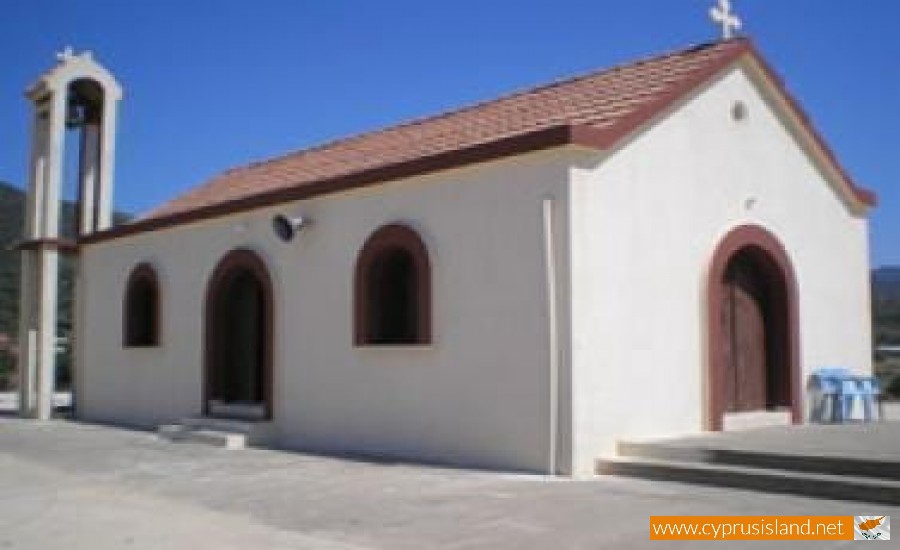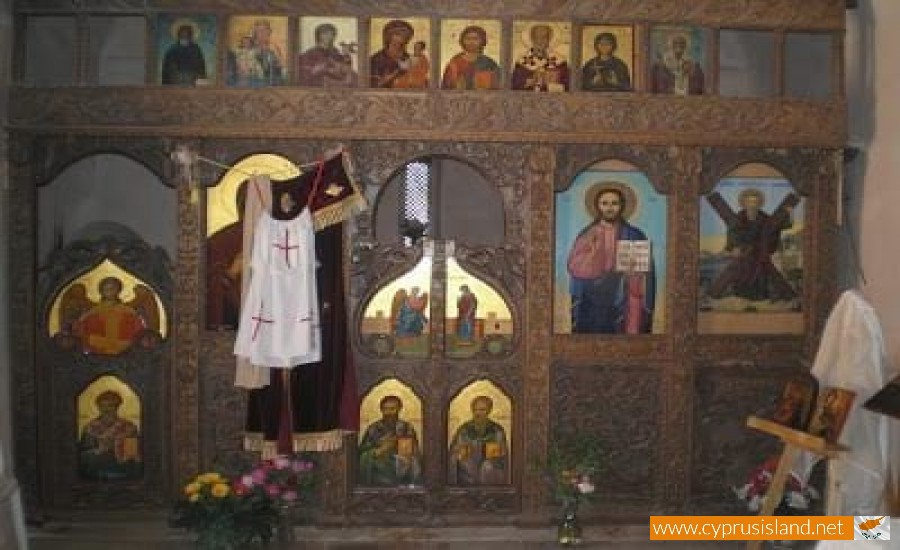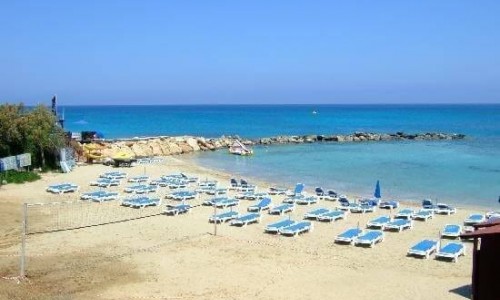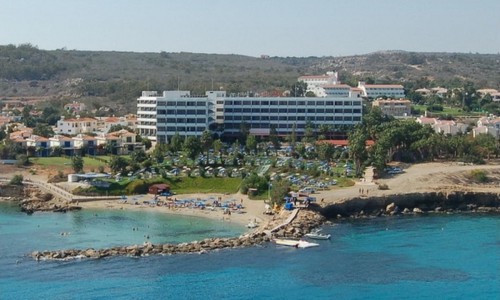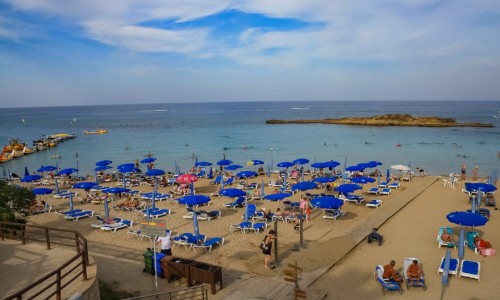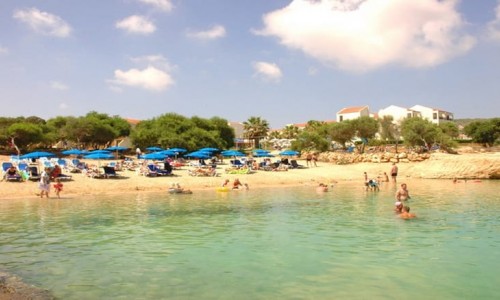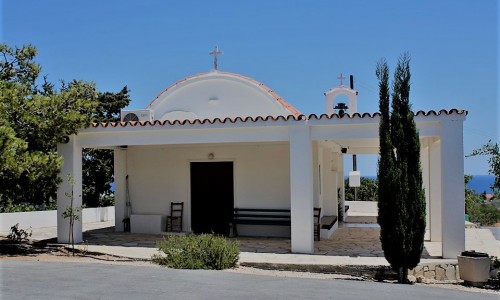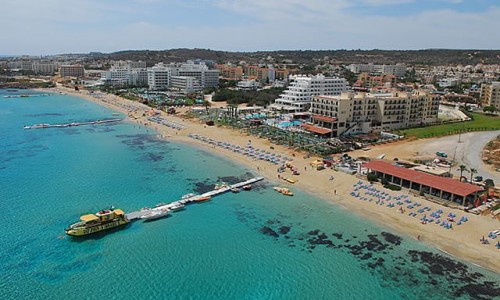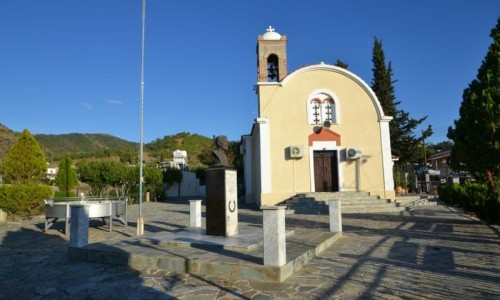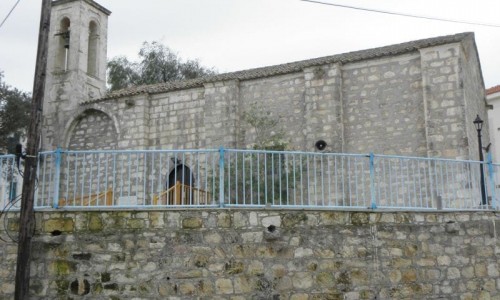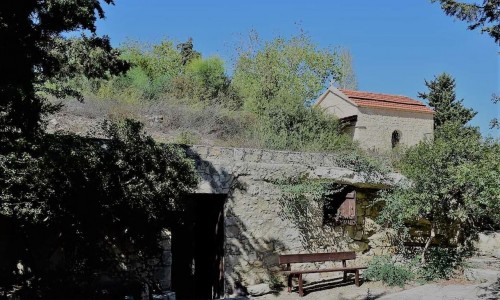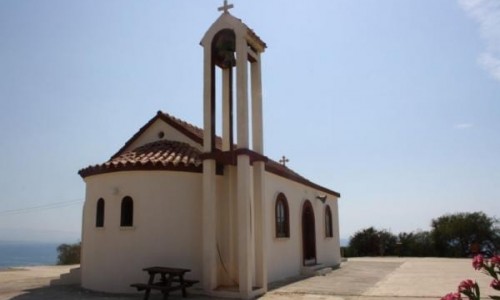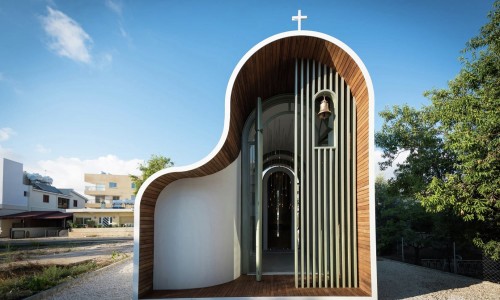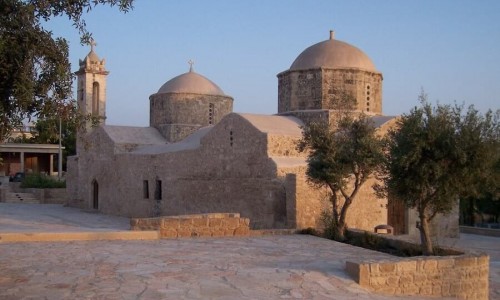Panagia Chrysopateritissa Church
Hidden within the pine-scented hills above the coastal village of Pomos in northwest Cyprus lies a place where time slows down, silence deepens, and the spirit finds calm. Panagia Chrysopateritissa is not a grand cathedral or a famous pilgrimage site — but it is sacred. Modest and aged, this small stone church offers something rare: solitude, mystery, and a living echo of centuries-old devotion, tucked in the wild embrace of nature.
A Church at the Edge of the Forest
Roughly 5 kilometers from Pomos, the church rests at the end of a narrow road that winds past olive groves and thick pine forest. As the sea disappears behind the hills and the birdsong begins to dominate, the setting reveals its true character: this is a sanctuary not only of faith but of nature.
Surrounded by woodland and overlooking the peaceful waters of the nearby Pomos Reservoir, Panagia Chrysopateritissa appears suddenly — small, weathered, and quiet, as if it's been listening for centuries. There are no ticket booths, no crowds, no souvenir stalls. Just stone, shadow, wind, and reverence.
A Name Shrouded in Legend
The name "Chrysopateritissa" is unique in Cyprus and has inspired more than one local legend. One version suggests that the name comes from the many "pateres" — fathers or monks — who once lived and worshipped here when the church was part of a larger monastery. The site, it is said, served as a spiritual retreat for monks who sought silence and seclusion.
Another legend tells of a revered abbot named Thomas, who once carried a golden staff — "chryso-pateras" — and painted the original icon of the Virgin Mary housed in the church. The title may have evolved from this figure of the golden-staffed father and his dedication to the Theotokos (Mother of God).
Whether a reference to monks or miracles, the name glows with spiritual weight — Panagia Chrysopateritissa: "Our Lady of the Golden Fathers" or "Our Lady of the Golden Staff."
A Blend of Ages: The Church Structure
The church is built in traditional Cypriot stone, with walls over a meter thick and roofed with terracotta tiles. Though small, the original structure exudes the strength and simplicity of 16th-century ecclesiastical architecture. Over the years, the church has been partially restored and extended. A newer western section — slightly elevated and built with modern materials — contrasts with the sunken sanctuary of the original church, into which visitors descend a few stone steps.
This architectural layering tells a quiet story of continuity: of a building that has adapted, healed, and endured. The wooden iconostasis — newly carved after the original was damaged — separates the sanctuary from the nave, framing an intimate interior of whitewashed walls, faint frescoes, and timeworn icons.
Among the icons still visible are depictions of the Virgin Chrysopateritissa, Saint George, Saint Catherine, and Saint Thekla. Some icons are so faded that only a trained eye can detect the outlines — but their presence is still deeply felt.
One of the more unusual features of the church is the presence of animal motifs and symbolic scenes that are rarely found in Cypriot village churches. These touches reflect the region’s folk spirituality and the artistic freedom once afforded to isolated monastic communities.
A Living Church with a Quiet Rhythm
Despite its remote location, Panagia Chrysopateritissa is not abandoned. It opens for worship on select feast days throughout the year, especially those dedicated to the Virgin Mary. On these days, the church comes alive with psalms, candles, incense, and the soft rustle of community gathering.
The churchyard, usually silent and dappled with light, fills with voices — families from Pomos, Kato Pyrgos, and nearby villages make the journey to attend liturgy, reconnect with their roots, and honor centuries of tradition.
Even when closed, the church receives quiet visitors. Hikers, photographers, and the spiritually curious stop here during walks around the Pomos Reservoir. For some, it’s a rest point; for others, it becomes a moment of meditation, where the setting, the silence, and the aged walls provoke unexpected reflection.
Memory in Stone: The Cemetery of Heroes
Next to the church is a small cemetery. Some of the graves bear the names of Cypriots who fell during the 1964 conflicts in the Tylliria region — a somber reminder that this place is not only sacred, but also a site of national memory.
These tombs, carved in simple stone, bring a historical layer to the church’s presence. Here, spiritual devotion and civic sacrifice merge in the stillness of the forest — a deeply Cypriot combination of land, struggle, and faith.
A Sacred Waypoint for Nature Lovers
The area around Panagia Chrysopateritissa is known for its walking trails. The Pomos Reservoir Loop, varying from 7 to 11 kilometers, offers a scenic path through pine forests, ravines, and wildflower meadows. Walkers often begin or end their journey at the church, which provides not only a physical resting place but also a spiritual one.
There are shaded picnic tables nearby, frequented by local families and hikers who bring bread, olives, and fruit to enjoy under the trees. The church is not fenced off. It does not impose. It welcomes quietly.
How to Visit
- Best Time: Spring and autumn offer the most pleasant weather for visiting. Feast days related to the Virgin Mary (especially August 15 and September 8) are ideal for experiencing the church in its spiritual fullness.
- Access: Drive from Pomos along a signposted road toward the dam. The road is narrow but paved. Parking is available near the church.
- Bring: Water, a sun hat, and respect — this is an active place of worship, even if it feels remote.
- Combine With: A visit to Pomos village, a swim near Pomos harbor, or a hike around the reservoir for a full day of spiritual and natural immersion.
A Church that Whispers, Not Shouts
Panagia Chrysopateritissa is not the kind of site that appears in glossy tourist brochures. It doesn’t tower. It doesn’t shine with gold leaf. It doesn’t try to impress.
Instead, it whispers.
It whispers of centuries past, of the rustle of monks’ robes, of humble prayers, of whispered lullabies to icons by candlelight. It whispers of grief, love, and resilience — the quiet kind that builds stone by stone and lasts a lifetime.
For the traveler seeking silence, mystery, and the authentic spirit of rural Cyprus, this little church offers a rare and moving experience. Not simply a place on a map — but a place in between: between forest and memory, between heaven and earth.


